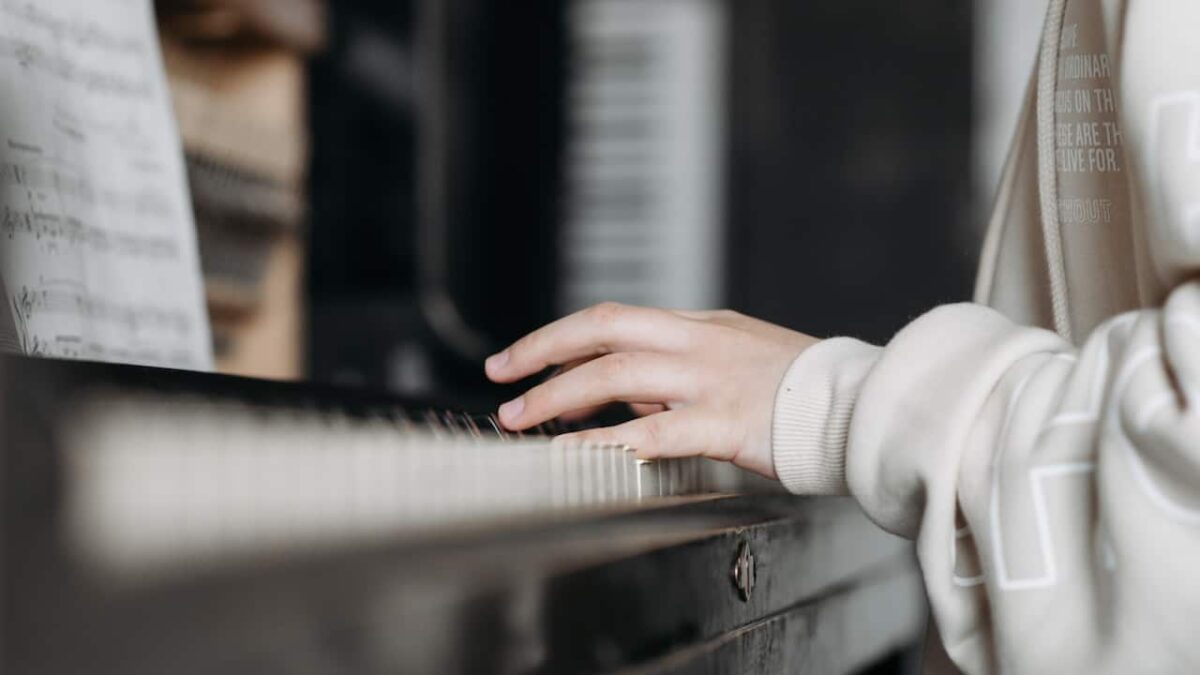In a typical jazz composition, the left hand strikes chords to create harmony and rhythm while the right hand picks out the melody. Using this as a metaphor, in fiction, the right hand would take care of the characters and plot while the left creates a thickening weave of allusion and counterpoint.
In a recent NPR Fresh Air interview with Brad Mehldau, the acclaimed jazz pianist mentions that early on in his career, he decided to spend more time with classical music in order to further develop his left hand.
With a typical jazz composition, the left hand strikes chords to create harmony and rhythm, while the right hand picks out the melody. Mehldau, however, concentrated on mastering some works by composers such as Bach, Brahms, and Beethoven which called for more complicated left-hand movements.
He went on to incorporate this style into his jazz playing, in the manner of others before him such as Oscar Peterson and Art Tatum. The results are striking. In Mehldau’s interpretation of Thelonious Monk’s ‘Monk’s Dream’, for example, the interviewer notes that “it sounds like you’re really doing independent things with your right hand and your left hand…there’s just these waves of sound, but you still hear the melody, like, woven through”.
The Victorian aesthete Walter Pater once remarked that all art aspires to the condition of music. That has been interpreted in various ways, to do with abstraction and uniting form and content. On another note, turning the function of a pianist’s left and right hands into a metaphor for creating as well as reading fiction offers interesting possibilities.
The right hand, in this case, would be the development of the main characters and plot that carries them from the first page to the last. For many novels, this is the dominant melody at the expense of other elements. These are the books often described as unputdownable, with eventful twists and turns leading to a satisfactory resolution. No mean feat.
Other novels use both right and left hands to advantage. The result is a rich and complex work with greater resonance than the rest. The right hand takes care of the characters and plot, while the left hand creates a thickening weave of allusion and counterpoint.
A strong sense of place is among such left-hand elements of novels. As Eudora Welty put it in one of her essays, place is “one of the lesser angels that watch over the racing hand of fiction”. Location, she emphasised, is “the ground conductor of all the currents of emotion, belief and moral conviction that charge out from the story in its course”.
Of course, all novels set their action in one location or another, real or imaginary. The point is that in some of them, the characteristics of a place are dominant and inform the whole work. The obvious examples are William Faulkner’s Yoknapatawpha County and R.K. Narayan’s Malgudi, but there are several more, from the creaking, shadowy interiors of supernatural fiction to English country houses where butlers roam.
The left hand has to do a lot more work in historical fiction and SF. Worlds have to be created, contexts need to be established, and settings should be out of the ordinary, yet adhere to an internal logic.
Subplots and minor characters across genres are also left-hand elements. They can emphasise certain aspects, serve as a foil to others, and provide an ironic commentary on the book’s themes. It makes sense not to let these overshadow a novel’s main developments, though even that can be enjoyable if done with gusto. Charles Dickens, for one, didn’t hold back in Oliver Twist, Bleak House, and many others.
To continue with the musical analogies, a novelist’s style can be said to be the keynote of the work. From this distinctive chord, other progressions take place. Both left and right hand work together to create a fundamental consonance: look at Rushdie’s chutnification, Austen’s irony, or Nabokov’s allusions and alliterations, for instance.
In these and other ways, a book becomes a full-bodied symphony, more resonant than simply another tale well told. As James Baldwin puts it in Sonny’s Blues: “…a piano is just a piano. It’s made out of so much wood and wires and little hammers and big ones, and ivory. While there’s only so much you can do with it, the only way to find this out is to try; to try and make it do everything.”
